

Table of contents
- Characteristics
- Location
- Floor
- Plant
- planting partner
- Bucket attitude
- toxicity
- Care
- Pour
- Fertilize
- Cut
- hibernate
- propagation
- seed
- head cuttings
- root suckers
- diseases and pests
One of the shrubs that conjure up a particularly exotic flair in our home gardens is the clover tree (Clerodendrum trichotomum) from the mint family. In late summer, pink buds open to reveal pure white star flowers. In autumn, blue-black berries follow, which are framed by wine-red calyxes and thus set a second highlight of the year.
Characteristics
- botanical name: Clerodendrum trichotomum (synonym: Clerodendrum fargesii)
- Genus: Clerodendrum
- Plant Family: Lamiaceae (Lamiaceae)
- Trivial names: lotus tree, lotus bush, Chinese lotus tree, Japanese lotus tree, destiny tree
- Origin: Japan, East China
- Growth height: 3 to 6 m
- Leaves: lanceolate, 10 to 20 cm
- Flowers: white with pink or reddish calyx
- Flowering time: from August
- Fruits: bluish with a red calyx, slightly poisonous
Location
Originally from Japan, Clerodendrum trichotomum thrives best in full sun or light partial shade. The shrub, which sheds leaves in cool regions and usually has several shoots, needs a lot of space because it can be almost six meters high and three meters wide when old. The Japanese Losbaum is most beautiful in a single position in an exposed location.
- Light requirements: full sun or partial shade
- preferably without direct midday sun
- warm
- sheltered from icy winds in winter
- facing southeast or west
- in pots if possible not on south-facing balconies without shade
- does not tolerate heat build-up
By the way:
The flowers exude a light vanilla aroma. If you crush the leaves, they smell like peanut butter.
Floor
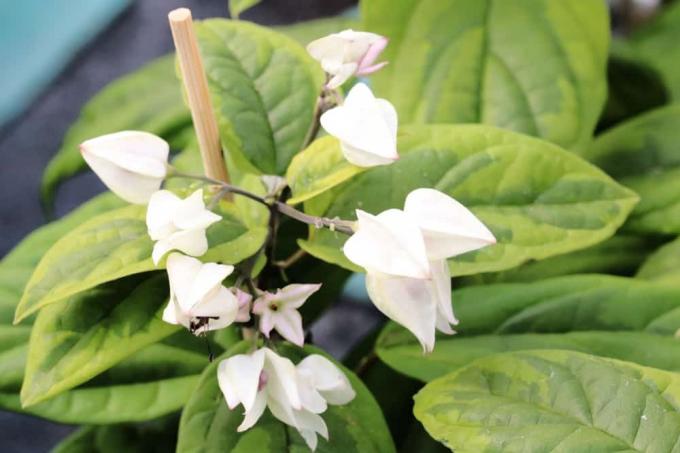
The shrub adapts well to almost all garden soils, whether acidic or alkaline, as long as they are not too wet. The more humic and permeable the substrate is, the easier it is to care for and the more lush the flowers will be.
- humorous
- well drained
- slightly damp but not wet
- profound
- pH value: neutral to slightly acidic
- lime tolerant
Plant
In winter hardiness zone 7 (up to -17 degrees) and warmer regions, i.e. almost all areas of Germany, a loose tree should be planted with the same care as bamboo. Since the wood can spread through root suckers, a rhizome barrier may be necessary if the location is not surrounded by a wall, asphalt or concrete paving stones.
- Time: spring or autumn
- in cold regions (mountainous regions): only in spring
- loosen up deeply
- create a drainage if necessary
- Mix in humus or potting soil
- Planting hole: twice the depth and width of the ball
- Planting depth: as before
planting partner
Clerodendrum trichotomum usually grows as a shrub or small tree up to three meters high. It benefits from similar partner shrubs or low perennials in its immediate vicinity. If the shrub is against a wall, colorful Persian ivy (Hedera colchicaeine) is an ideal addition. Red-leaved maple species or Chinese tulip trees (Liriodendron chinense) also form a beautiful contrast to the dark green, elongated foliage. An underplanting with ferns or small bamboo species is also very attractive.
Bucket attitude
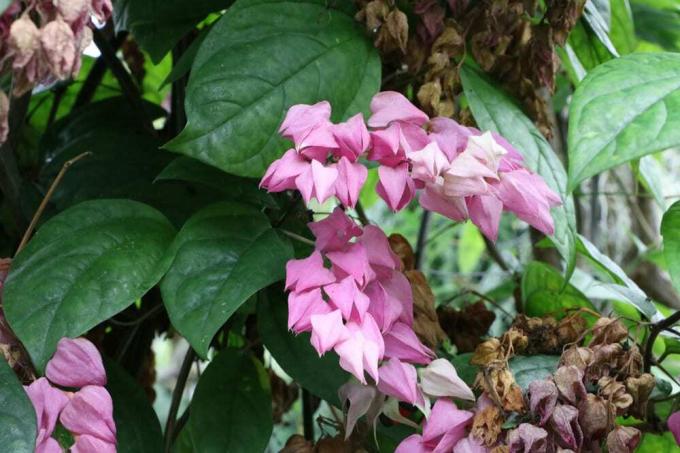
The ornamental shrub is ideal for pot culture. However, if possible, it should not be placed in a location in the blazing midday sun. In a semi-shady place, it thrives in a high-quality, humus-rich substrate and needs medium watering.
Tip:
Incidentally, the Chinese Losbaum is not only available with dark green leaves. A cultivated form (Variegata) surprises with beautiful, whitish variegated foliage.
toxicity
The Clerodendrum trichotomum owes its trivial name Tree of Destiny to its slightly poisonous fruits. In this regard, there is little to worry about when the shrub is cultivated in isolation, as the plant is usually unable to pollinate itself. In addition, the fruit is inedible, so there is little likelihood that someone will accidentally eat larger quantities.
Care
In addition to the usual care measures such as watering and fertilizing, it is necessary for a Japanese loose tree to be watered regularly removing the root runners in spring and autumn so that the shrub does not spread uncontrollably in the bed spreads. Otherwise, the ornamental shrub is very robust and absolutely easy to care for.
Pour
The robust Losbaum with its lush foliage of very large leaves requires careful watering so that the tree can grow healthily throughout the season. A dense undergrowth or even a thick layer of mulch prevents too much moisture from evaporating from the soil. In the case of potted plants, it is advisable to sink the pot halfway into the soil of the garden bed during periods of heat. This reduces the water requirement enormously, but does not completely eliminate additional watering.
- slightly damp
- the sunnier the location, the more frequent watering
- never let it dry out completely
- If possible, do not water over the flowers and leaves
- does not tolerate waterlogging
Fertilize
During the vegetation phase between spring and late summer, the loose tree is grateful for an occasional application of fertilizer.
- Outdoor plants: in the spring compost, horn shavings or berry fertilizer
- possibly potash fertilizer in autumn for good winter hardiness
- Container plants: every 14 days with liquid fertilizer
- alternatively: long-term fertilizer for potted plants
- Period: from April to mid-August
Cut
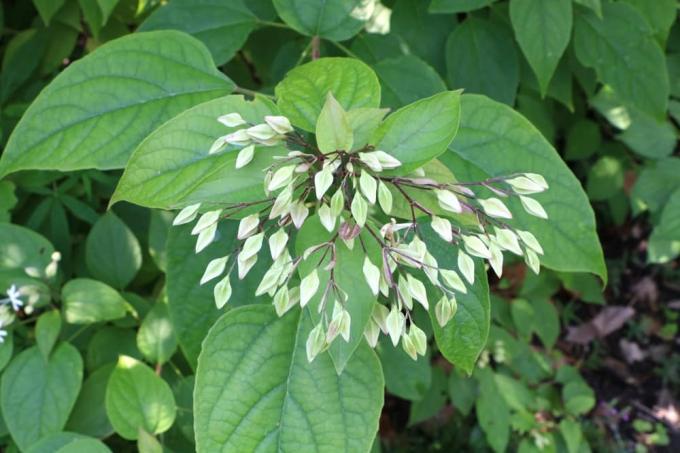
A regular pruning is not necessary for the loose tree, because the shrub grows very slowly. If necessary, older or too large shrubs can be cut back in late winter or early spring before new growth occurs. It is advisable to work slow-release fertilizer into the soil and mulch it after cutting. Be sure to check the shoots for frost damage in the spring after frosty winters. A not inconsiderable part can die off. In addition, a maintenance cut is carried out.
- Cut out old, dried up or diseased shoots
- Cut inward growing branches at the base
- remove one of two crossing branches
- Cut water shoots (branches growing vertically upwards) at the base
If the crown grows too big or slowly bare from the inside due to lack of light, a targeted cut can also help here. It is better to cut back individual old or very long branches more than just shortening all the branches. At least two to three eyes or leaf nodes must remain per shoot. In order for the crown to keep a nice shape, it should always be cut over an outward-facing eye.
Tip:
If you are not sure which branches have frozen in winter, simply wait until new growth starts before cutting.
hibernate
A Clerodendrum trichotomum is good, but not absolutely hardy. With temperatures down to -15 degrees in a sheltered place, a well-established loose tree has few problems. However, at these temperatures, the root area must not be wet. Young plants and seedlings should not overwinter outdoors in the first and second year because they cannot withstand the severe frosts. It is best to place them in a light or dark place in the cold house. From the third year, the Chinese Losbaum can be planted in a bucket or in a bed. Additional winter protection is recommended in cold regions. This is not necessary in wine-growing regions. In mild winters it is possible for the tree to even retain its foliage.
- Young plants: at 0 to 5 degrees
- light or dark
- Greenhouse, garage or in the cool basement
- older potted plants: 5 to -10 degrees
- Water only enough to keep the root ball from drying out
- Outdoor plants: Cover mulch, straw or leaves
In very cold areas, we recommend piling up the garden soil around the root area to protect the not entirely hardy plant from freezing roots. But wait until the leaves have completely fallen off. If there is frost damage to the shoots, the plant will usually sprout again in the spring.
A notice:
Alternatively, there is also the possibility of a year-round room culture with the Losbaum. However, you should make sure that it gets enough light in winter and is not right next to the heater.
propagation
Propagating a Clerodendrum trichotomum is not particularly difficult. The following options are available for this:
seed
The seeds must be pre-treated before sowing by soaking them in lukewarm water for 24 to 48 hours. They are then placed in a plastic bag with moist sand and a cold period of around three months is simulated in the vegetable compartment of the refrigerator. Since the tree can only rarely pollinate itself, another plant is usually necessary for the harvest of seeds.
- Time: autumn to winter
- generally under glass at all times
- Substrate: coconut fibre, seed compost or sand-perlite mixture
- Sowing depth: about 1 cm
- Germination temperature: 22 to 25 degrees
- bright, but without direct sunlight
- Germination time: 21 to 60 days
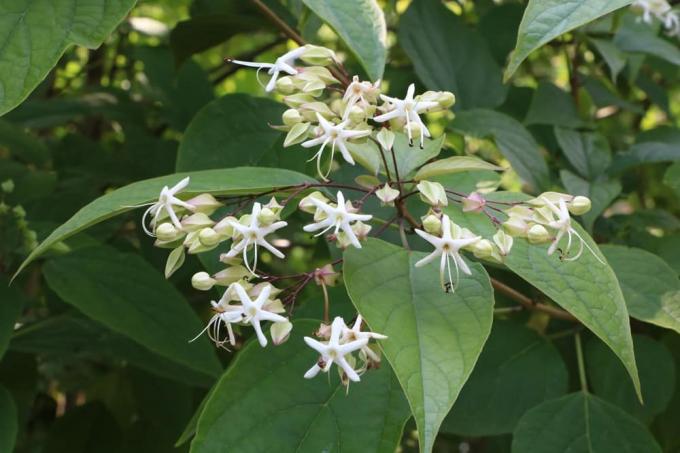
As soon as the seeds germinate, the lid of the mini greenhouse can be removed and the individual plants pricked out. The young plants should continue to be watered regularly. Planting outdoors can already take place in spring in wine-growing regions. In cooler areas you should wait until the plant is about three years old.
head cuttings
The propagation of the Japanese Losbaum by cuttings is somewhat easier and less time-consuming. It is optimal when the fresh shoot tips are already 15 to 20 centimeters long.
- When: summer
- only use healthy, strong shoots
- remove lower leaves
- cut large leaves in half
- Substrate: loam-sand-humus mixture or potting soil
- Insertion depth: about 5 cm
- water and keep slightly moist
- Location: bright, without direct sun
Now it's time to wait and water regularly. A transparent plastic bag over the cutting prevents too rapid evaporation. A sure sign of root formation is the sprouting of new leaves. The cover (bag) can be removed and the young plant cared for like an older one. The small Losbaum can then be transplanted the following spring.
root suckers
The third way to propagate is by cutting off root shoots. This is obtained by carefully digging up the root shoots and separating a piece of about five centimeters with a shoot knot. Placed about one to two centimeters deep in potting soil and watered, a new plant that resembles the mother plant forms in a cool place until next spring.
diseases and pests
A loose tree is very robust and practically free from the usual diseases and pests that occur in our latitudes. Spider mites or white flies occasionally appear in an unfavorable location and especially with warm hibernation. In this case, the pests should be washed off thoroughly under the shower or with the garden hose, especially the undersides of the leaves. A cool location with a little more humidity then protects against further spread and a new infestation.
 garden editorial
garden editorial I write about everything that interests me in my garden.
Learn more about houseplants
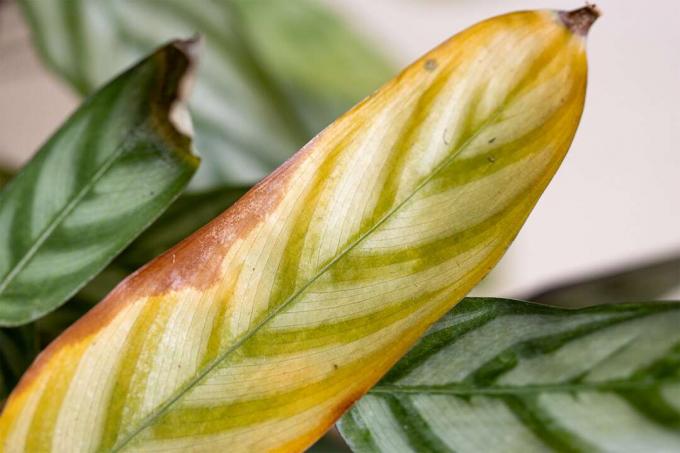
Calathea has yellow leaves: how to save?
When a Coriander (Calathea) gets yellow leaves, the cause is usually a lack of care. In order to save them from dying, a number of countermeasures must be taken, which are described in detail here.

Room bamboo: 13 tips for care
The room bamboo impresses with its compact growth habit and is a densely grown houseplant. The ten most important tips for caring for the sweet grass are compiled for you here.
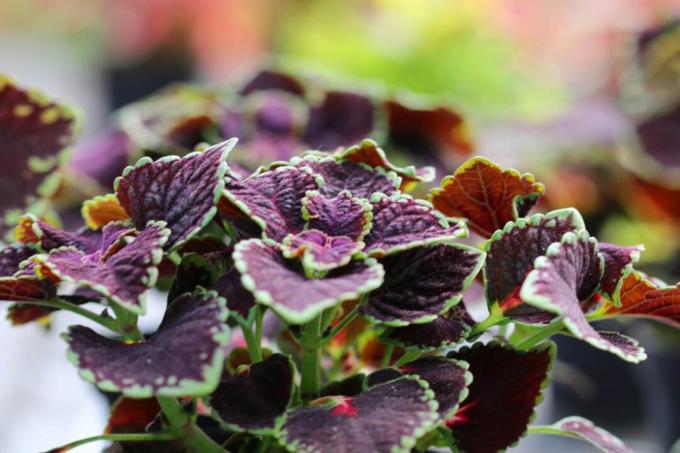
Coleus blumei: 21 tips for the red nettle
The colored nettle is a warmth-loving and easy-care foliage plant. The coloring of the leaves varies from monochromatic to variegated with a wide variety of drawings. Spectacular splashes of color can be set in beds, balcony boxes and tubs or as a houseplant.
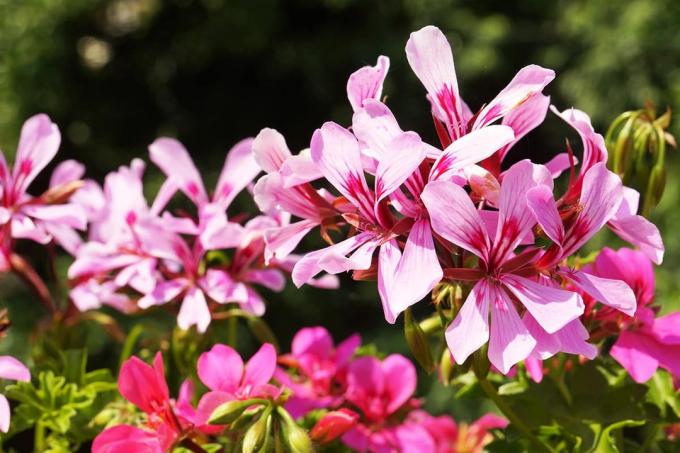
Scented houseplants: 25 scented plants for the home
An apartment without indoor plants is hardly conceivable. Scented plants in particular have a very special effect. Not only are they decorative, they can lighten the mood and rival any artificial home fragrance.

Lucky chestnut, Pachira aquatica: care from A to Z
The care of the lucky chestnut does not require any special expertise. However, if you know the way of life of this ornamental plant, you can better adapt site conditions and care measures to your needs. The plant can be easily propagated if a plant already exists.

Rubber tree: 13 care tips for Ficus elastica
The rubber tree is one of the most popular indoor plants. It is available in different varieties, easy to care for and stands out for its large leaves, which are colored in intense shades of green. Within a few years, it grows into a state small tree without much effort.
